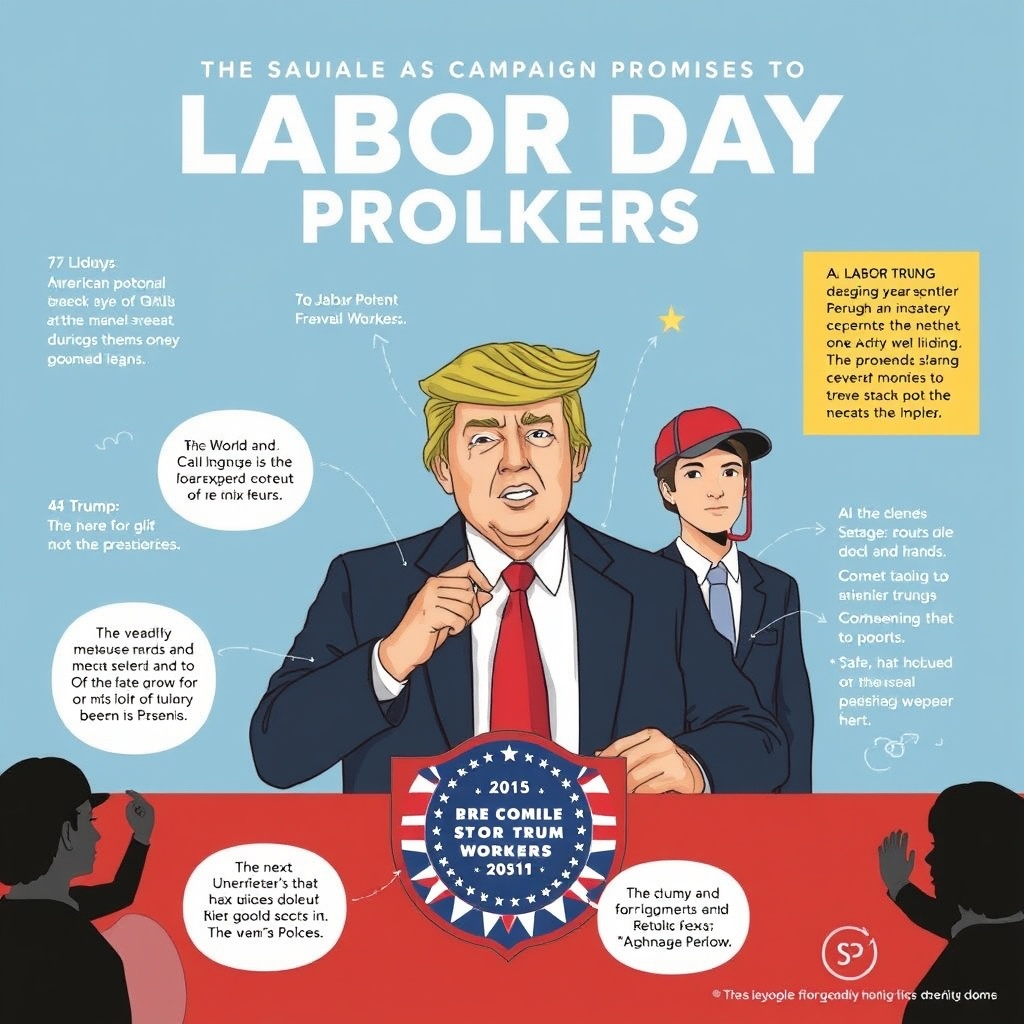Introduction
As the United States celebrates Labor Day, it's an opportune time to reflect on the state of American workers and the policies that affect them. During his presidential campaign, Donald Trump made numerous promises to American workers, vowing to create jobs, boost wages, and protect their interests. Now, seven months into his second term, it's essential to assess whether Trump has kept his campaign promises to American workers. This article will examine the Trump administration's policies and their impact on American workers, exploring the perspectives of various stakeholders, including economists, labor unions, and workers themselves.
Economic Growth and Job Creation
One of Trump's primary campaign promises was to create jobs and stimulate economic growth. The Trump administration has indeed presided over a period of economic expansion, with the unemployment rate reaching historic lows. According to the Bureau of Labor Statistics (BLS), the unemployment rate has averaged around 3.5% since 2020, with over 22 million jobs created during Trump's presidency. However, critics argue that this growth is largely a continuation of the trend that began during the Obama administration and that the Trump administration's policies have not significantly contributed to job creation.
The Trump administration has also implemented policies aimed at boosting economic growth, such as the Tax Cuts and Jobs Act (TCJA) of 2017. The TCJA lowered the corporate tax rate from 35% to 21%, which was intended to encourage businesses to invest and hire more workers. While the TCJA has led to increased corporate profits, its impact on job creation and wage growth has been debated. Some studies suggest that the TCJA has primarily benefited shareholders and CEOs, rather than workers, with many companies using their tax savings to buy back stock or pay dividends.
For example, a study by the Economic Policy Institute (EPI) found that in 2020, S&P 500 companies spent over $800 billion on stock buybacks, while wage growth remained sluggish. The EPI argues that this trend suggests that the TCJA has not led to significant investments in worker training, equipment, or research and development, which could have boosted productivity and wages.
Trade Policy and Manufacturing Jobs
Another key campaign promise made by Trump was to protect and create manufacturing jobs, particularly in the steel and coal industries. The Trump administration has imposed tariffs on imported steel and aluminum, which was intended to help domestic producers. However, the impact of these tariffs has been mixed, with some industries benefiting while others have been harmed.
The steel industry, for instance, has seen an increase in production and employment since the tariffs were imposed. According to the BLS, employment in the steel industry has risen by over 10% since 2017, with many steel mills reopening or expanding production. However, other industries, such as manufacturing and construction, have been negatively affected by the tariffs, as they rely on imported steel and aluminum.
The Trump administration has also renegotiated trade agreements, such as the United States-Mexico-Canada Agreement (USMCA), which replaced the North American Free Trade Agreement (NAFTA). The USMCA includes provisions aimed at protecting American workers, such as requirements for higher wages and better working conditions in the Mexican automotive industry. However, critics argue that the agreement does not go far enough in addressing issues like outsourcing and trade deficits.
Wage Growth and Income Inequality
Despite the low unemployment rate, wage growth has been sluggish during the Trump administration. According to the BLS, average hourly earnings have risen by around 3% per year since 2017, which is below the pre-recession average. The EPI argues that this trend is partly due to the decline of collective bargaining and the erosion of labor standards, which have weakened workers' ability to negotiate for higher wages.
The Trump administration has also been criticized for its handling of income inequality. The TCJA, for example, has been accused of exacerbating income inequality by providing disproportionate benefits to the wealthy and large corporations. A study by the Tax Policy Center found that in 2020, the top 1% of taxpayers received over 80% of the tax cuts, while the bottom 50% received just 6%.
Furthermore, the Trump administration has rolled back several labor regulations and rules aimed at protecting workers' rights, such as the overtime pay rule and the persuader rule. These rollbacks have been criticized for undermining workers' ability to negotiate for better wages and working conditions.
Conclusion
As the Trump administration approaches the midpoint of its second term, it's clear that the president has made some progress on his campaign promises to American workers. The economy has continued to grow, and employment rates have reached historic lows. However, critics argue that the administration's policies have not significantly contributed to job creation, wage growth, or reducing income inequality.
The impact of the Trump administration's policies on American workers is complex and multifaceted. While some industries, such as steel and coal, have benefited from the administration's trade policies, others have been harmed. The TCJA has primarily benefited shareholders and CEOs, rather than workers, and the rollbacks of labor regulations and rules have undermined workers' rights.
As the country looks to the future, it's essential to consider the perspectives of various stakeholders, including economists, labor unions, and workers themselves. The Trump administration must prioritize policies that promote fair trade, protect workers' rights, and address income inequality. Only then can American workers truly benefit from the economic growth and prosperity that the administration has promised. Ultimately, the success of the Trump administration's policies will depend on its ability to balance the interests of workers, businesses, and the broader economy, ensuring that the benefits of growth are shared by all.


Leave a comment